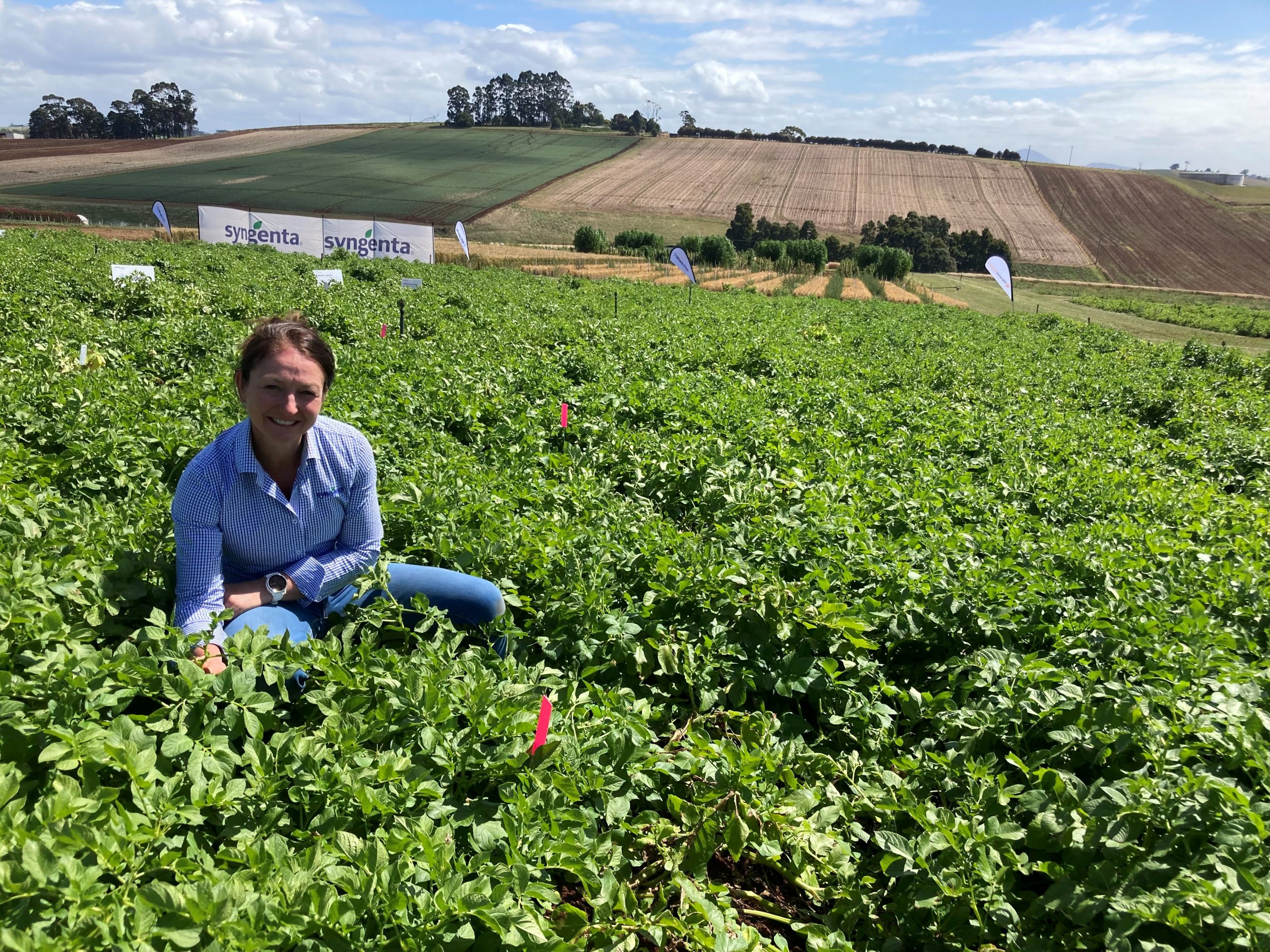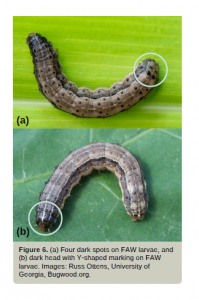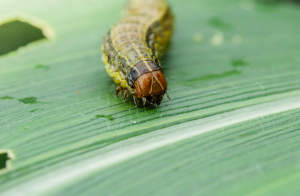
Offering a new solution for sclerotinia control
28 February 2022
Smarter farming on the horizon for Australian veg growers
28 February 2022A management guide for fall armyworm has recently been developed by AUSVEG, with assistance from the Department of Agriculture and Fisheries, Queensland. The guide is now available to growers and industry in an online and hard copy format. AUSVEG Biosecurity Officer Zali Mahony reports.
Fall armyworm (FAW) is a significant threat to horticultural production globally and is now posing a risk to Australian horticulture. A destructive pest that attacks more than 350 plant species overseas, fall armyworm was first detected in Australia in January 2020 and travelled from the Torres Strait to Tasmania in just 14 months.
What to look out for
FAW larvae look similar to other armyworms present in Australia. However, there are two distinguishing features of FAW larvae that can be used for identification:
1. Four dark spots at the end of their body arranged in a square.
2. Dark head with an upside down, pale Y-shaped marking.
Integrated pest management approachThe key to efficient control of FAW is an integrated pest management (IPM) program, inclusive of an artillery of sustainable practices. Cultural farm practices, biological control or conservation of natural enemies – as well as biopesticides and conventional insecticide applications – offer opportunities for future management of FAW.
Although there are chemicals that are available for control of FAW, the pest is known to quickly develop insecticide resistance to certain chemical groups. For example, evidence collected from Western Australia claims that FAW populations are resistant to group 1A (Carbamates) and 1B (Organophosphates) insecticides. Viable biological control options for FAW populations in Australia are currently being studied; however, research is in its early stages.
Monitor your crops regularly
Early detection of FAW ensures a quick response and accurate timing of control methods. Regular crop surveillance and monitoring for FAW eggs and larvae is the foundation of a successful IPM program and helps minimise damages and reduce harvest losses.
For more information on chemicals available to control FAW, biological control options and crop monitoring techniques, download a copy of Management of fall armyworm in vegetable crops in Australia by clicking here or email Zali Mahony on the details below if you wish to receive a hard copy.
Find out more
Please contact AUSVEG Biosecurity Officer Zali Mahony on 03 9882 0277 or email science@ausveg.com.au.
Cover image: Four dark spots on FAW larvae. Image courtesy of Russ Ottens, University of Georgia, Bugwood.org.


